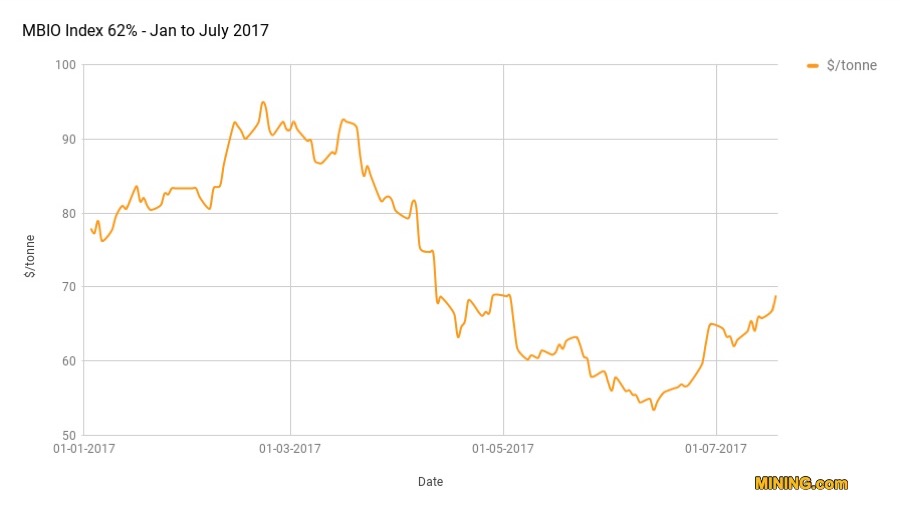
Prices for iron ore skyrocketed Tuesday as Rio Tinto (ASX,LON:RIO), the world’s second largest exporter, warned Tuesday that shipments from Australia were expected at about 330 million tonnes in 2017. That’s down from its April forecast of 330 million-to-340 million tonnes.
Ore with 62% content in Qingdao added $2.03 a tonne overnight, to close at $68.84 a tonne Tuesday, the highest level since mid-April according to the Metal Bulletin.
From the recent low of $53.36 a tonne hit on June 13, the benchmark price has now added more than 27% — an impressive return in a little over a month.
The surge also follows the release of strong Chinese Q2 GDP figures on Monday, including the news that crude steel output from the world’s largest producer climbed to the highest level on record in June.
Additionally, China’s imports of the steelmaking raw material this year are on course to exceed 1 billion tonnes, breaking last year’s record.
From the recent low of $53.36 a tonne hit on June 13, iron ore prices have now surged more than 27%.
The fresh rally has not made main forecasters change their negative outlook for the iron ore prices. Morgan Stanley recently cut its estimated third quarter price and the investment bank now sees iron ore averaging $50 a tonne over the period, climbing to $55 in the final three months.
For the year as a whole Morgan Stanley expects the commodity to average $63 compared to a year-to-date average of $74. It also said it expected iron ore to continue to soften averaging $58 next year and $54 in 2019.
The latest forecast from the Morgan Stanley is more optimistic than predictions in a research note Citigroup released last month. The bank lowered its price outlook by a fifth saying iron ore will average $48 a tonne in Q4 2017, down from $60 in its previous prediction.
Both analysis blame growing global supply – particularly from Vale’s S11D mine and Roy Hill in Australia hitting full production – for the weak outlook. According to Citigroup, 2017 will see a surplus of 118m tonnes following a more than 60m tonnes glut last year. Morgan Stanley predicts nearly 40m tonnes of oversupply this year, growing steadily to top 120m tonnes in 2019 and 185m excess tonnes in 2021.

Source: Metal Bulletin Iron Ore Index.